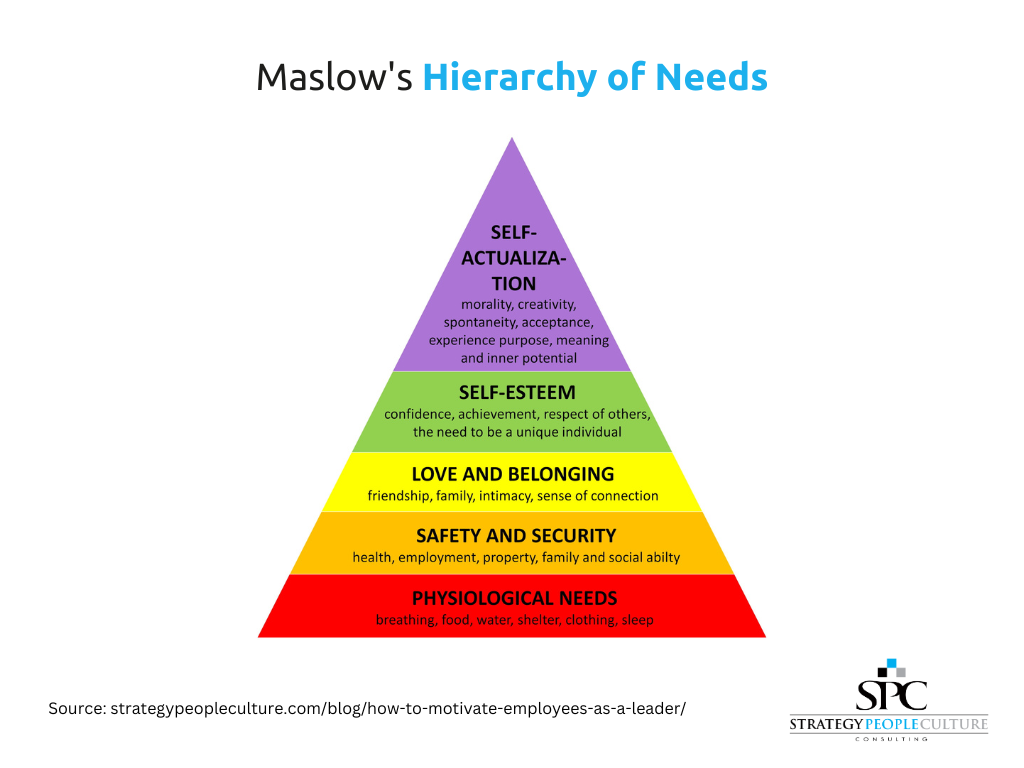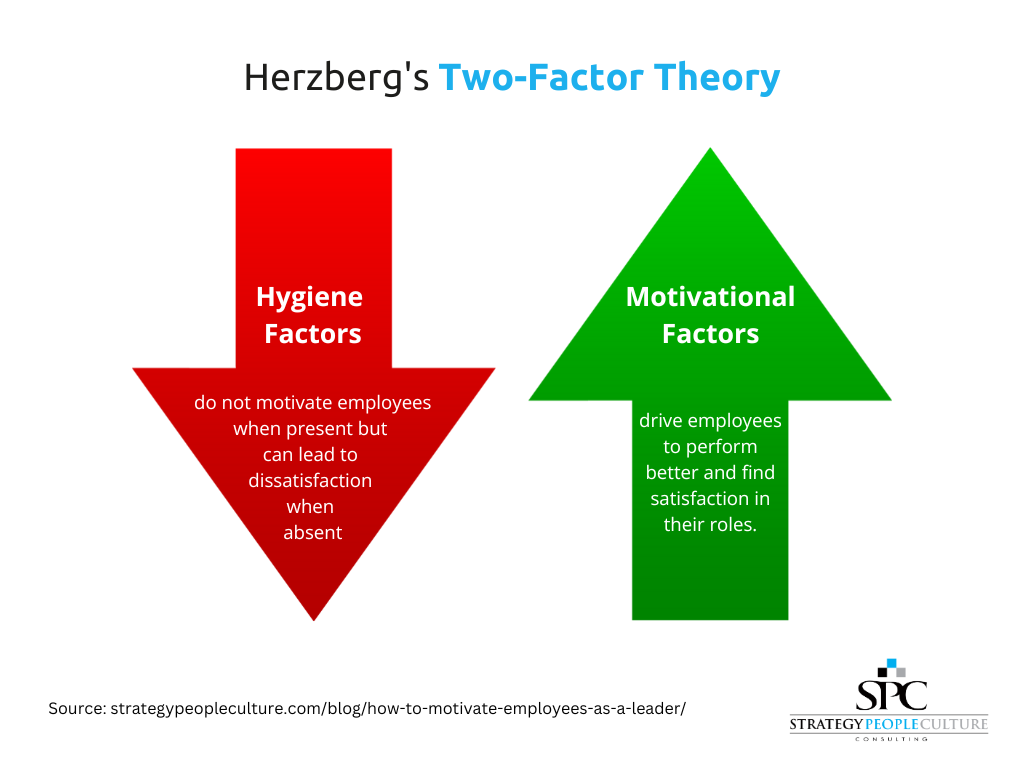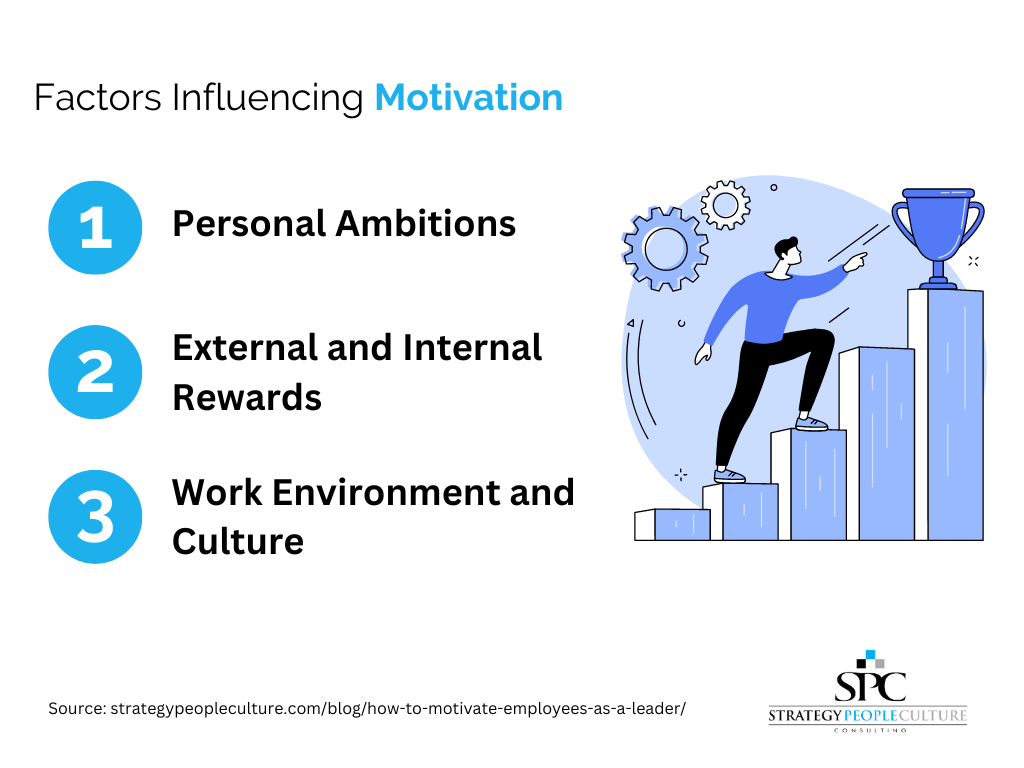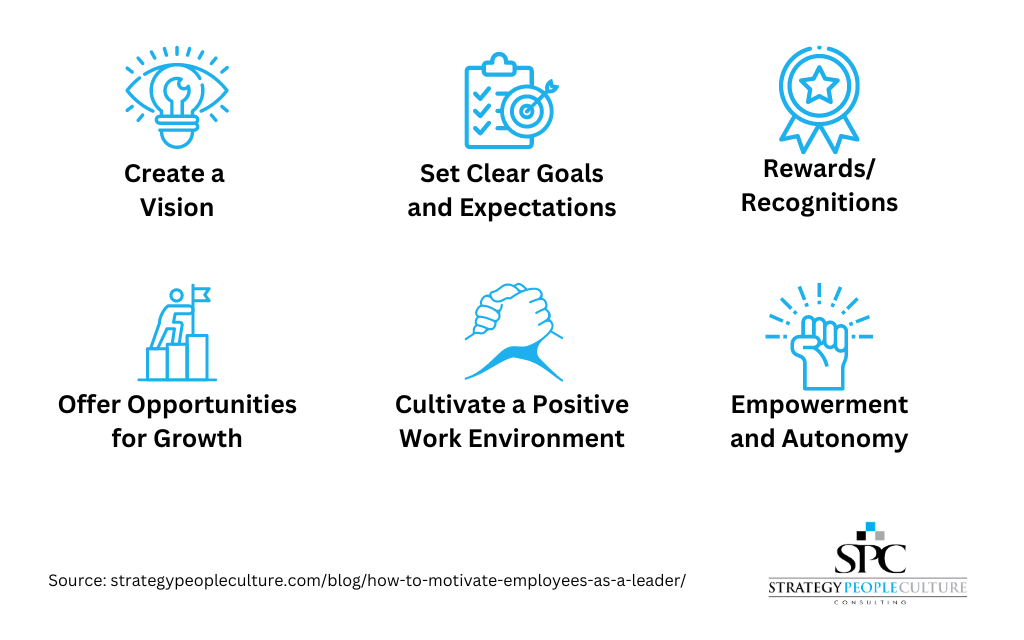How to Inspire and Motivate Your Employees The Right Way

How can we ensure our business is maximizing its success? One clear part of a complicated answer lies in a motivated workforce. Inspired employees fuel productivity and innovation, along with caring about doing their best for the organization, creating a positive work culture. The formula? An environment where employees feel valued and eager to contribute to success.
As a leader, understanding the vital role of motivation can transform your team’s performance and propel your business to new heights. By harnessing this power, you’re not just building a team—you’re building a movement. In this article, we’ll explore theories of motivation, strategies for inspiring and motivating your employees, and common pitfalls to avoid.
Understanding the Basics of Employee Motivation
Employee motivation is a critical aspect of any successful business. It’s the driving force that propels your workforce to strive for excellence, push their limits, and achieve their personal and professional goals. But what exactly is motivation, and how does it work?

Basics of Motivation
At its core, motivation is the psychological catalyst that spurs individuals into action. It refers to the underlying drives, desires, or needs that influence our behaviors and decisions. Whether it’s the pursuit of a promotion, the desire to contribute to a project, or the satisfaction of bringing an idea to fruition, these intrinsic and extrinsic factors fuel our dedication and determination.
Research has shown that motivated employees are not just more engaged, but they also perform better. According to a recent study by Gallup, employees work up to 20% better when they are motivated. This increase in productivity can have a significant impact on a company’s overall success.
Let’s explore theories that explain employee motivation and how leaders can harness these factors to drive success.
Maslow’s Hierarchy of Needs

Abraham Maslow, a renowned psychologist, proposed a theory that humans are motivated by a hierarchy of needs. At the base of this pyramid lie basic physiological needs like food and shelter. As we ascend, we encounter needs for safety, love and belonging, esteem, and finally, self-actualization at the peak. In the context of the workplace, employees strive to meet these needs starting from job security (safety) to achieving their full potential (self-actualization).
Herzberg’s Two-Factor Theory

Frederick Herzberg’s Two-Factor Theory, also known as the Motivation-Hygiene Theory, suggests there are two sets of factors that influence motivation in the workplace. Hygiene factors (such as salary, job security, and work conditions) do not motivate employees when present but can lead to dissatisfaction when absent. On the other hand, motivational factors (like recognition, responsibility, and personal growth) truly drive employees to perform better and find satisfaction in their roles.
Factors Influencing Motivation
Now, let’s look into the key factors that significantly influence employee motivation:

1. Personal Ambitions
An individual’s personal ambitions and career goals can significantly influence their level of motivation. Employees who believe their managers understand who they are and partner with them to achieve their aspirations within their current role or organization are likely to be more motivated to excel at their jobs.
2. External and Internal Rewards
Rewards play a crucial role in employee motivation. External rewards like bonuses, promotions, and benefits can certainly boost motivation. However, internal rewards such as a sense of accomplishment, personal growth, and job satisfaction often have a deeper, more lasting impact.
3. Work Environment and Culture
A positive work environment and strong company culture can foster motivation. When employees feel valued, respected, and part of a supportive team, they’re more likely to be motivated to contribute to the organization’s success.
The Difference Between Motivation and Inspiration
While often used interchangeably, motivation and inspiration are distinct concepts. Motivation can be seen as a “push” – the internal or external force that compels us to act. It’s often linked to rewards or the avoidance of negative outcomes. Conversely, inspiration is the “pull”. It’s an uplifting feeling that naturally draws us towards taking action, usually driven by admiration for someone or something.

Both motivation and inspiration are essential in the workplace. While motivation pushes employees to meet their targets and objectives, inspiration pulls them towards bigger ideas and visions, fostering creativity and innovation. A balance between the two can result in a highly engaged, productive, and fulfilled workforce.
Understanding employee motivation is not just about improving productivity—it’s about creating a work environment where everyone feels inspired to bring their best selves to work each day. By recognizing and addressing the various factors that influence motivation, organizations can cultivate a thriving and motivated workforce.
Strategies to Inspire and Motivate Your Team

Inspiring and motivating a team requires a multifaceted approach that goes beyond just monetary rewards. The absolute most important thing you can do as a leader is to ensure your employees believe and feel you care about them as people and treat them right. Here are some strategies you can employ to keep your team motivated and engaged:
Creating a Vision
One of the primary roles of leadership is to create a compelling vision for the future or at minimum, be able to articulate your organization’s purpose. This vision should align with the company’s mission and values, serving as a guiding light that inspires and motivates employees to strive towards a common goal. Leaders should communicate this vision clearly and consistently, ensuring all team members understand the part they play in achieving it. Sharing the company’s mission and values not only gives employees a sense of purpose but also fosters a shared sense of identity and belonging within the team.
Setting Clear Goals and Expectations
Setting clear goals and expectations is crucial for maintaining motivation and engagement among your employees. Using a technique such as the SMART (Specific, Measurable, Achievable, Relevant, Time-bound) framework can help ensure goals are clear and achievable. Regular check-ins and feedback sessions allow leaders to provide constructive feedback, address any issues promptly, and recognize employees’ contributions, further boosting motivation and job satisfaction.
Recognition and Rewards
Recognizing and rewarding employees for their hard work and achievements is a powerful motivator. Personalized recognitions – such as shout-outs in team meetings or personalized thank-you notes – can make employees feel valued and appreciated. Additionally, implementing bonus structures and offering non-monetary rewards, like extra time off or professional development opportunities, can further incentivize employees to perform at their best.
Offering Opportunities for Growth
Another key strategy to inspire and motivate employees is to offer opportunities for growth. Training and development programs not only equip employees with new skills and knowledge but also show them that the company is invested in their personal and professional growth. Similarly, clear promotion pathways and career progression plans can motivate employees to excel in their current roles, knowing that their efforts can lead to advancement opportunities. Not all positions and organizations have opportunities for career-track growth, and leaders need to be creative in these situations on how to create personal growth for those team members.
Cultivating a Positive Work Environment
A positive work environment is fundamental to employee motivation. Encouraging open communication allows for the free exchange of ideas and feedback, fostering a culture of transparency and mutual respect. Regular team-building activities and bonding opportunities can strengthen relationships among team members, enhance collaboration, and create a more enjoyable and motivating work environment.
Empowerment and Autonomy
Empowering employees by trusting them with decisions can significantly boost their motivation and job satisfaction. When employees feel trusted and respected, they’re more likely to take ownership of their work and strive for excellence. Offering flexibility in work hours and the option for remote work can also contribute to increased motivation, as it shows employees that the company respects their work-life balance and trusts them to manage their time effectively.
Common Mistakes and Pitfalls to Avoid

In the pursuit of success, many organizations unknowingly fall into traps that can hinder their progress and demotivate their employees. These common mistakes and pitfalls can be avoided with awareness, understanding, and strategic planning. Let’s explore some of these potential missteps and how to circumnavigate them.
One-Size-Fits-All Approach
The concept of individualization is critical in today’s diverse work environment. A one-size-fits-all approach can lead to disengagement and dissatisfaction among employees, as it fails to consider their unique needs, preferences, and aspirations. To be clear, leaders should ensure they are providing equal opportunity and treating people the same regardless of their demographics (such as age, gender, race, etc). That said, the difference should occur in understanding the individual person you are working with, as each person has unique differences, including their individual motivators.
Organizations should foster a culture of inclusivity and diversity, recognizing that each employee brings unique talents, perspectives, and experiences to the table. Customized development plans, personalized feedback, and flexible work arrangements are just a few strategies that respect and leverage individual differences, thereby boosting motivation and productivity.
Neglecting Feedback
Feedback is a key component of growth and improvement. However, neglecting to provide regular, constructive feedback can leave employees feeling undervalued and directionless.
Regular feedback loops allow for consistent communication between leaders and employees, providing opportunities for learning, improvement, and recognition. It’s important to note that feedback should be constructive rather than destructive. While constructive criticism focuses on specific behaviors and provides actionable suggestions for improvement, destructive criticism tends to be vague, personal and offers no clear path to improvement. The former can motivate and guide employees towards better performance, while the latter can demotivate and confuse them.
Just as important in providing constructive feedback is finding opportunities to provide positive feedback. Going back to the concept of belonging, telling people what they are doing wrong without telling them what they are doing right can long-term be counterproductive.
Ignoring Work-Life Balance
In today’s fast-paced world, work-life balance is often overlooked, but it’s crucial for maintaining the mental health and well-being of employees. Employers generally care about the work their employees are doing, which of course, makes sense, and that is why the employees are there in the first place. However, overworking can lead to burnout, decreased productivity, and lower job satisfaction.
Organizations should not lose sight of the well-being of their employees by encouraging a healthy work-life balance. This could involve offering flexible working hours, promoting the importance of taking breaks, and ensuring employees have adequate time off. Providing resources for mental health support and creating a supportive work environment can also play a significant role in preventing burnout and promoting overall well-being.
Avoiding these common pitfalls involves recognizing and respecting individual differences, fostering open communication, and promoting a healthy work-life balance. By doing so, organizations can create a positive and motivating work environment that encourages employees to perform at their best.
Scenarios and Insights from the Corporate World

The best way to understand the intricacies of organizational dynamics is through real-world case studies. These narratives offer valuable insights into the successes and failures of various strategies implemented by companies. Let’s delve into the experiences of three different companies and the lessons we can learn from them.
Company A: Boosting Morale with Transparent Communication
Company A, a renowned multinational corporation, faced a significant downturn in employee morale. Upon investigation, it was found that the root cause was a lack of transparent communication. Employees felt left in the dark about the company’s direction and their roles within it.
In response, Company A implemented a new communication strategy. This included regular meetings, transparent sharing of company progress and challenges, and open forums for employees to voice their concerns and suggestions.
The result was a dramatic improvement in morale. Employees felt more connected to the company’s mission and valued as part of the team. This case demonstrates the powerful impact of transparent communication on employee morale and engagement.
Company B: Lessons Learned from Reward System Failures
Company B, a burgeoning tech startup, implemented a reward system to motivate its employees. However, they fell into the common trap of offering generic, one-size-fits-all rewards. The result was a lackluster response from the employees, who felt the rewards didn’t reflect their individual preferences and needs.
Learning from this failure, Company B revamped its reward system. They started offering personalized rewards based on individual preferences, including flexible work hours, professional development opportunities, and tailored bonuses.
This shift resulted in increased employee satisfaction and motivation, proving that recognizing individual needs and preferences in reward systems can significantly enhance their effectiveness.
Company C: Empowering Employees Leads to Success
Company C, a leading retail firm, was struggling with slow decision-making processes and low employee initiative. To address this, they decided to empower their employees, giving them more autonomy in their roles and trusting them with decision-making responsibilities.
The effect was transformative. Employees felt more invested in their work, and the company saw an upswing in innovation and efficiency and reduced shrinkage. Furthermore, the decision-making process became faster and more effective as those closest to the issues at hand were empowered to solve them.
This case highlights the benefits of empowering employees and trusting them with decision-making roles. Not only does it boost employee satisfaction and motivation, but it also leads to more efficient and innovative problem-solving within the organization.
Keeping the Momentum Going

A motivated workforce is not the end goal but a dynamic process that, if sustained, can become a difference-maker for your business. It requires consistent effort, adaptability, and a deep understanding of your employees’ evolving needs and expectations. As a leader, here are some of the steps you can take to ensure your team remains motivated and engaged:
- Make it a priority to check in with individual employees regularly. Ask them about their progress, provide support or guidance if needed, and recognize their efforts.
- Take feedback from your team seriously and use it to inform organizational strategies. Regularly solicit suggestions for improvement as well as ideas for new initiatives.
- Create opportunities for professional growth and development when possible through training and mentorship programs. Empower employees to take ownership of their career path.
- Promote a culture of inclusion by respecting each employee’s unique talents, perspectives, needs, and aspirations.
- Encourage social connections among team members with regular team bonding activities or virtual meetups.
With the right approach, you can create an inspiring work environment where your team feels valued, appreciated, and motivated to give their best.
Conclusion
In conclusion, a motivated workforce is not only an asset but also vital for a thriving organization. It fuels innovation, drives performance, and sets your company apart in the competitive business landscape. As a leader, It’s your responsibility to create an environment where your team feels valued, empowered, and motivated to give their absolute best. Remember, your company’s success is about the people who help you get there. Prioritize employee motivation and watch your organization flourish.
Ask for Help from an Executive Coach
An executive coach can be an invaluable ally in motivating your team. Effective executive coaching will provide you a powerful partner to challenge your thoughts and encourage action for you to grow as a leader while offering you a private accountability partner. Working on developing your own greater self-awareness as a leader will ultimately lead to you better understanding of your team’s dynamics, strengths, and areas for improvement that can help you develop effective motivation strategies, foster a positive work environment, and enhance your communication skills. At Strategy People Culture, we provide tools and guidance to cultivate trust, respect, and empower each leader we work with to reach their full potential. Contact us today, and let’s get started on building a motivated and engaged team.
